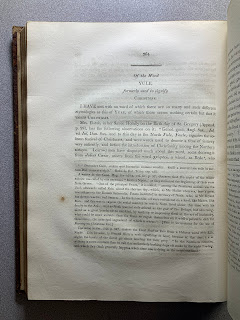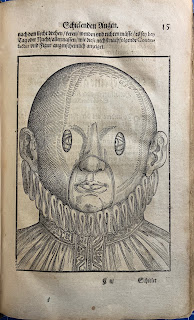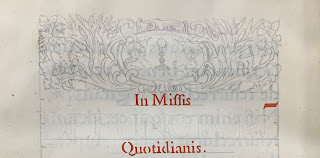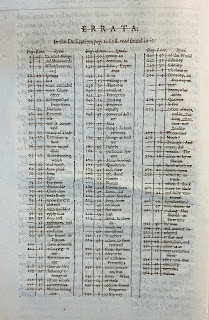If you had opened up a copy of
The Dartmouth one afternoon on April 29th, 1951, you would’ve seen the headline “Oedipus Mac: A Modern Tragedy” in the editor’s section. But, the article wasn’t telling the story of the mythical Greek king of Thebes. Rather, you would know that the “Mac” in the title referred to General Douglas MacArthur, who had a hero’s homecoming the week before in New York as a beloved commander in World War II, but now more importantly in Korea. The article read like a satire and a personal attack on General MacArthur, scandalizing many of its readers and causing them to scrutinize the publication’s student Editor-in-Chief, who was also a veteran. While it was typical to adhere to the patriotic anti-communism of the 1950s, this student response to the Korean War reveals that at Dartmouth, Cold War language was used to interpret and describe issues beyond the ideological matter of communism, bringing seriousness and backlash within the campus discourse.
The Korean War is often historicized in terms of Cold War geopolitics and as an ideological confrontation between the Soviet Union and the United States. However, there is growing literature on the fragmented reactions to the Korean War and the different versions of “anti-communism” that were becoming increasingly embedded in social norms, which heavily depended on the local contexts and memories of WWII. For instance, historian Masuda Hajimu has written about how the Korean War served as a catalyst for the materialization of the Cold War for millions of ordinary people while before, he argues, it was a genuinely imagined reality that only existed because people believed it did. Along these lines, what I’m interested in is how the local context of the U.S. university campus (Dartmouth’s in this case) responded to the Korean War as a site of overlapping intellectual and policy activity, which was typical of universities in the 1950s, in addition to being a site of student culture and dissent.
The sociopolitical atmosphere of the early 1950s makes the “Oedipus Mac” article — which was published under Editor-in-Chief Ted Laskin ‘51 — quite audacious in the context. In the satire, both MacArthur’s policies and character were criticized, at one point stating, “as long as he had command in Korea, the U.N. realized that there would never be peace, because MacArthur was the Far East Caesar who dreamed of empire from Hawaii to the Ryukyus Islands.” It went on to call out MacArthur’s belief in “the White Man’s burden and its corollary, the slave psychology of orientals” and referred to “the treatment of Negroes under his command,” citing Thurgood Marshall’s report for the NAACP. It’s clear that besides condemning the U.S’ involvement in Korea, the editor(s) of The D were more interested in critiquing General MacArthur as an individual, despite his national popularity. Furthermore, the references to MacArthur’s racist attitudes and discrimination in the U.S. military indicate that topics such as civil rights, which are often expressed as “domestic” issues and viewed as separate from Cold War thought, actually had much to do with this response to the war in Korea.
Certain alumni were outraged by the article, and many even decided to write to President Dickey complaining about it. One alum in the class of 1909 wrote a letter to the editor of the Alumni Magazine, expressing his “rage and disappointment” not only towards Ted Laskin, but also towards the college administration for failing to prevent the taint to Dartmouth’s name. He questioned, “can Dartmouth men take pride in recent news stories which indicate an active sympathy with Russian Communism?” This reaction is confusing at first as The D article didn’t reference “Russian Communism” at all. However, this alum’s response can be well-contextualized in the emerging notion of “common sense” in 1950s American society, which was that communists, socialists, and leftists were all under the control of Stalin; and with the onset of the Korean War, this perspective crystalized. The growing advocacy for civil rights and labor rights were also perceived to be destabilizing existing social norms and hierarchies, further inflaming and conflating American “anti-communism” (Masuda 2015). In this way, we can see how a critique of General MacArthur, during a time when the U.S. was at war in Korea, was reduced to a “sympathy for Russian Communism” through the logic of one reader.
By examining this specific incident, it becomes clearer that we shouldn’t understand discourse on the Korean War simply in terms of Cold War geopolitics. One’s local environment and identity need to be considered when historicizing how the Korean War was “experienced”. For example, many African American veterans of WWII condemned the racism and inequality of the very institutions that individuals like General MacArthur defended (Suri 2009). Within the context of Dartmouth’s campus (and I suspect on more college campuses), responses to the Korean War were never about the mere question of condemning or supporting communism, despite the incredible effort by policymakers, administrators, and ordinary people to paint the issue as such. President Dickey ended up writing his own piece for the Alumni Magazine’s June 1951 issue in response to The D’s article and the alumni complaints. In response to that, Ted Laskin wrote a seven page letter directly to President Dickey. What I find fascinating is that this campus saga was ultimately triggered by a student response to the Korean War. And surprisingly, with each letter of criticism towards the student behind the article, it becomes increasingly clear that they did not quite stem from confidence in the American Cold War ideals, but more from an insecurity regarding the institution’s reputation and the ideology it claimed to uphold.
To read the original article and the documents surrounding this controversy, drop by Rauner to look at our copies of The Dartmouth and the Dartmouth Alumni Magazine and ask for DP-12, box 7110, "Criticisms and Suggestions - The Dartmouth."
Bibliography:
Hajimu, Masuda. Cold War Crucible : The Korean Conflict and the Postwar World. Cambridge, MA: Harvard University Press, 2015. doi:10.4159/harvard.9780674735941.
Suri, Jeremi. Henry Kissinger and the American Century. Cumberland: Harvard University Press, 2009. doi:10.4159/9780674281943.
Posted for Rachel Kahng '25, recipient of a Historical Accountability Student Research Fellowship for the 2024 Summer term. The Historical Accountability Student Research Program provides funding for Dartmouth students to conduct research with primary sources on a topic related to issues of inclusivity and diversity in the college's past. For more information, visit the program's website.

























.jpg)





















